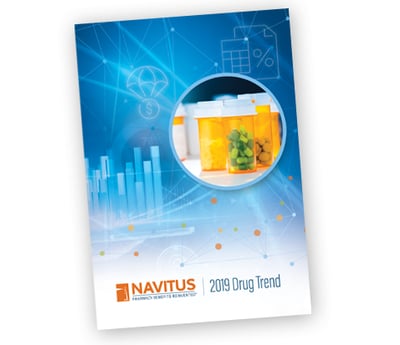An important part of limiting spend is helping members avoid high cost products when equally effective generic alternatives exist.
If you’re a plan sponsor, chances are that you have your hands full working to keep pharmacy costs manageable for your organization and your employees. With over 20,000 prescription drugs currently approved for marketing by the FDA, deciding which drugs to cover can be a challenge.1 Unfortunately, a number of market events can lead to scenarios where even small shifts in utilization can result in large cost increases for plans. Having a PBM partner with the tools and experience necessary to address these scenarios when they occur is imperative for every plan sponsor.
Here are three examples of such market events and how we responded to keep plan costs low.
Secret #1: SET THE STAGE FOR UPCOMING GENERICs
Generic medications are chemically identical to their brand-name counterparts, but can offer significant savings. However, it can be difficult for plan sponsors to take advantage of the launch of a new generic if members are already using a number of similar products. In the case of Lyrica®, a nerve pain medication that can also be used to treat seizures, an extended release formulation (Lyrica® CR) was launched in 2018, a year before the generic alternative became available. Allowing members to switch to the new formulation in the short term would make it more costly and difficult to move them to the generic later. By keeping Lyrica® CR off the formulary and having almost no utilization at the time the generic launched, plan sponsors were better able to take advantage of the cost-savings associated with the generic when it became available in 2019.
SECRET #2: Protect Your Plan from "New" Products Identical to Generics
Some high-cost products claim to be new, but differ only minimally from existing generics, such as in dosage strength. For instance, Aplezin™, an extended release bupropion product, can cost over $1,000 per claim. In contrast, other generic extended release bupropion products are available for less than $20 per month. In these cases, a handful of members using the more expensive formulation can have a major impact on plan spend. A lowest-net-cost formulary strategy prevents this by covering only the less-expensive, but clinically equivalent alternative.
SEcret #3: Block Unnecessarily Repackaged Vitamins
A popular practice in recent years is packaging several common vitamins together into a high-cost “pack.” Far more expensive than separately packaged vitamins, these can drive up plan costs by thousands of dollars per claim. A proactive approach to blocking these is important, as some pharmacies will use them to generate additional revenue at the plan’s expense. Plan sponsors can shield themselves from these unnecessary costs by identifying these products and excluding them from their formularies.
Want to learn more about ways to reduce your costs? Download our 2019 Drug Trend Report today! It’s loaded with cost management strategies that can help get your Rx benefits headed in the right direction.

- Fact Sheet: FDA at a Glance. U.S. Food and Drug Administration. https://www.fda.gov/about-fda/fda-basics/fact-sheet-fda-glance. Updated October 18, 2019. Accessed June 3, 2020.





